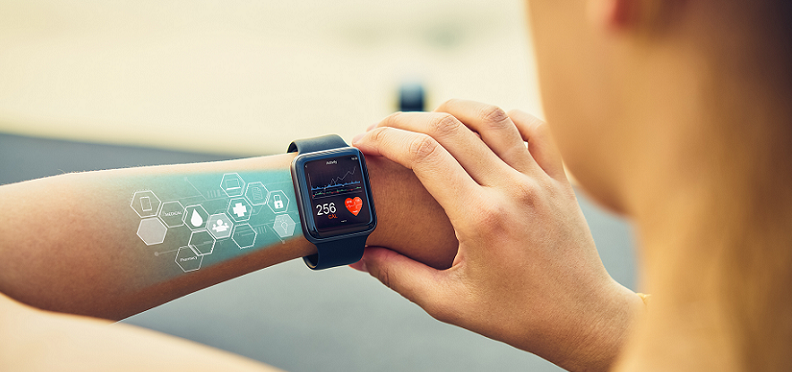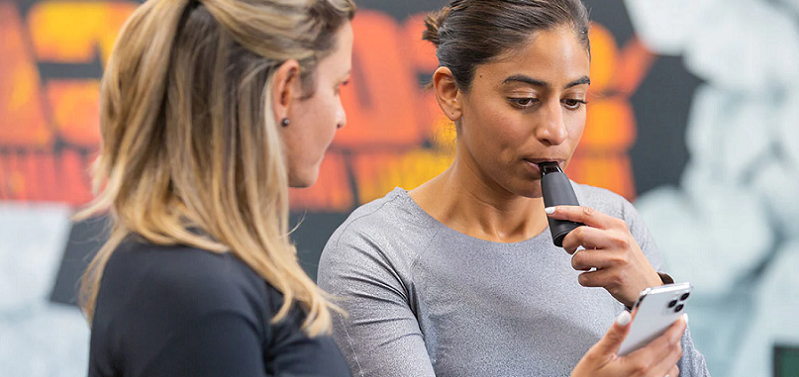
Biohacking, at its core, is the science and art of optimizing your body, mind, and environment to reach your full potential. It’s about understanding and applying biology, technology, and nutrition in a way that works best for you. In the realm of fitness, this means fine-tuning your diet, sleep, genetics, and even your surroundings to maximize your performance and recovery. If you’ve ever wondered how you can push your body’s limits to achieve peak physical performance, you’re in the right place.
Contents
- Introduction to Fitness and Biohacking
- The Science Behind Biohacking
- Biohacking Strategies for Fitness
- Nutritional Biohacking: Optimizing Diet for Physical Performance
- Sleep Biohacking: Enhancing Recovery and Performance
- Genetic Biohacking: Understanding Your DNA for Better Fitness
- Neurological Biohacking: Brain Training for Mental Strength and Endurance
- Environmental Biohacking: Optimizing Surroundings for Peak Performance
- Real-World Biohacking Examples
- Getting Started with Biohacking for Fitness
- References
Introduction to Fitness and Biohacking
The human body is a remarkable machine, capable of extraordinary feats of strength, endurance, and agility. However, much like any machine, the performance of our bodies can be optimized. That’s where the concept of biohacking comes in.
Definition of Biohacking
Biohacking is a broad term that encompasses a wide range of activities, all with the goal of improving one’s physical, mental, and even emotional state. It’s a self-improvement philosophy, a blend of science, technology, and a deep understanding of human physiology to ‘hack’ the body’s natural processes for improved performance. This can include anything from nutritional changes and sleep optimization to more advanced techniques like genetic engineering.
Overview of Fitness in the Context of Biohacking
When it comes to fitness, biohacking can offer unique avenues for enhancing performance and recovery. Traditional fitness wisdom focuses primarily on exercise routines and diet. Biohacking takes it a step further, examining a wider range of factors that influence our physical capabilities.
From optimizing sleep for better muscle recovery, tweaking our diet to match our genetic predispositions, to mental conditioning for improved focus and determination, biohacking allows us to approach fitness from a holistic and highly individualized perspective.
The Science Behind Biohacking
Biohacking is not a new fad, but a discipline rooted in scientific understanding and evidence. It’s the application of systems thinking to biology, treating the body as a complex system that can be probed, understood, and modified [1].
The Origins and Evolution of Biohacking
Biohacking, in essence, started with the earliest humans. Our ancestors, for instance, biohacked their bodies by learning which plants had medicinal properties, how to use fire for warmth and cooking, and later, how to cultivate crops and domesticate animals.
In the modern context, biohacking has evolved to include everything from making dietary changes based on scientific research, to using wearable technology to track biometrics, and even performing DIY biology experiments at home. The advent of more accessible and affordable technology has propelled biohacking into the mainstream, making it possible for anyone to experiment with optimizing their biology.
The Biological Mechanisms Involved
At its core, biohacking is about understanding and manipulating the biological processes that govern our bodies. This can involve a range of mechanisms, including:
- Metabolic processes: Through diet and exercise modifications, biohackers aim to optimize the body’s energy production and usage.
- Genetic expression: Epigenetics, the study of how your behaviors and environment can cause changes that affect the way your genes work, is a key component of biohacking. By modifying certain lifestyle factors, biohackers can potentially influence their gene expression.
- Neurological functions: Some biohackers focus on the brain, using techniques like meditation, neurofeedback, and nootropics (substances that can enhance cognitive function) to optimize mental performance.
- Hormonal balance: Understanding the body’s hormonal responses to various stimuli can help biohackers manipulate these hormones to achieve desired outcomes, like improved mood, increased energy, or better sleep.
The Role of Technology in Biohacking
In today’s digital age, technology plays a pivotal role in biohacking. Wearable fitness trackers and smartwatches, for instance, can track everything from heart rate and sleep patterns to blood oxygen levels and stress, providing biohackers with valuable data about their bodies.
More advanced technologies like personal genetic testing kits can offer insights into individual genetic predispositions, allowing biohackers to tailor their fitness strategies to their unique genetic makeup.
In essence, technology provides the tools needed to monitor, analyze, and adjust our biohacking efforts, making it an indispensable part of modern biohacking [2].

Biohacking Strategies for Fitness
While fitness is often associated with physical exercise, biohacking takes a more holistic approach. It considers various aspects of our lifestyle and environment that contribute to our overall physical performance.
Nutritional Biohacking: Optimizing Diet for Physical Performance
Food is fuel for our bodies. By understanding how different nutrients affect our energy levels, recovery, and overall fitness, we can make more informed dietary choices.
- Personalized nutrition: Everyone’s body reacts differently to certain foods. What works well for one person may not work for another. Using food sensitivity tests or genetic tests, you can tailor your diet to your body’s specific needs [3].
- Intermittent fasting: This involves cycling between periods of eating and fasting. Some research suggests that it may improve metabolic health, aid in weight loss, and even enhance longevity.
- Macro and micronutrient tracking: Keeping track of your intake of macronutrients (proteins, fats, and carbohydrates) and micronutrients (vitamins and minerals) can help ensure your body gets what it needs to perform optimally.
Sleep Biohacking: Enhancing Recovery and Performance
Sleep is crucial for recovery, mental clarity, and overall well-being. Biohacking sleep can involve:
- Optimizing your sleep environment: This can include adjusting room temperature, minimizing light and noise, and investing in a high-quality mattress and pillows.
- Establishing a sleep schedule: Going to bed and waking up at the same time every day can help regulate your body’s internal clock and improve the quality of your sleep.
- Using technology: Sleep trackers can provide valuable insights into your sleep patterns, helping you make necessary adjustments.
Genetic Biohacking: Understanding Your DNA for Better Fitness
Genetic biohacking involves using genetic information to tailor your fitness strategy [4]. Direct-to-consumer genetic testing can provide insights into your genetic predispositions, allowing you to optimize your workout and nutrition plans accordingly.
Neurological Biohacking: Brain Training for Mental Strength and Endurance
Our mind plays a significant role in our fitness journey. Mental resilience, focus, and motivation are all crucial for consistent performance and improvement.
- Meditation and mindfulness: Regular practice can improve focus, reduce stress, and enhance mental resilience.
- Nootropics: Also known as ‘smart drugs,’ these are substances that can enhance brain function. They range from natural supplements like omega-3 fatty acids to prescription medications.
- Neurofeedback: This involves using real-time displays of brain activity to learn how to self-regulate brain functions.
Environmental Biohacking: Optimizing Surroundings for Peak Performance
Our environment can significantly impact our fitness levels and overall health. Biohacking your environment might involve:
- Light: Exposure to natural light during the day and minimizing artificial light at night can help regulate your body’s circadian rhythm, boosting your mood and energy levels [5].
- Air Quality: Ensuring clean, fresh air in your surroundings can improve cardiovascular and respiratory health.
- Noise Control: A quiet environment can reduce stress levels and improve focus and sleep quality.
By combining these biohacking strategies, you can create a comprehensive and personalized approach to fitness, pushing your body’s performance to its peak.

Real-World Biohacking Examples
While the concept of biohacking might sound futuristic or abstract, many individuals have already embraced it to push their physical boundaries. Let’s explore some real-world examples of biohacking in action.
Successful Individuals Who Have Used Biohacking
- Dave Asprey: Often considered the father of modern biohacking, Dave Asprey is the founder of Bulletproof 360, a company known for its high-performance coffee. Asprey used biohacking techniques like nutritional tweaks (including his famous Bulletproof Coffee), sleep optimization, and various technologies to lose weight and improve his mental performance.
- Ben Greenfield: A former bodybuilder and triathlete, Ben Greenfield is now a fitness coach and a prominent figure in the biohacking community. He employs various biohacking techniques, including cold exposure, breathwork, and dietary modifications, to optimize his physical performance and recovery.
- Tim Ferriss: Best known for his book “The 4-Hour Workweek,” Tim Ferriss is also an avid biohacker. He uses methods such as intermittent fasting, targeted supplementation, and mindfulness practices to enhance his productivity and physical fitness.
Their Techniques and Routines
While each of these individuals has a unique approach to biohacking, some common elements in their routines include:
- Nutritional optimization: All of them pay careful attention to what they consume, often using supplements and following specific dietary protocols to boost their energy and performance.
- Mind-body practices: They incorporate techniques like meditation, yoga, or breathwork to improve mental clarity and focus.
- Leveraging technology: They use various gadgets and apps to track and improve their sleep, stress, and other health markers.
The Impact of Biohacking on Their Fitness Levels
For these individuals, biohacking has led to significant improvements in their fitness and overall wellbeing. They’ve reported benefits such as increased energy levels, improved mental clarity, enhanced physical performance, and faster recovery times.
It’s important to note, however, that what works for one person may not work for another. Biohacking is highly personal, and each individual’s approach should be tailored to their unique needs and goals.

Getting Started with Biohacking for Fitness
Embarking on a biohacking journey can seem daunting, given the multitude of potential strategies and the wealth of information available. However, by starting small, focusing on your individual goals, and gradually refining your approach, you can begin to harness the power of biohacking for fitness [6].
Understanding Your Personal Fitness Goals
Before you dive into biohacking, it’s important to have a clear understanding of your fitness goals. Are you looking to build muscle, improve endurance, lose weight, or simply maintain a healthy lifestyle? Your goals will influence which biohacking strategies are most appropriate for you.
Selecting Suitable Biohacking Strategies
With your goals in mind, you can begin to explore different biohacking strategies. Start with one or two areas that resonate with you. This could be something as simple as adjusting your sleep schedule or experimenting with different dietary approaches. Remember, the key to biohacking is personalization – what works best for others may not work best for you.
Seeking Expert Advice and Conducting Personal Research
It’s always a good idea to consult with healthcare professionals before implementing major lifestyle changes. They can provide guidance tailored to your personal health circumstances and fitness goals. Additionally, educate yourself about biohacking through books, podcasts, and reputable online resources. Knowledge is power, and the more you understand about biohacking, the better equipped you’ll be to make informed decisions.
Monitoring and Adjusting Your Biohacking Approach Over Time
Biohacking is an iterative process. It involves regularly monitoring your progress, evaluating the effectiveness of your strategies, and making necessary adjustments. This is where wearable fitness technology can be highly beneficial. By providing valuable biometric data, these devices allow you to track your progress and refine your approach based on concrete evidence.
Remember, biohacking is a journey, not a destination. It’s about continual self-improvement and exploration. Be patient with yourself, and celebrate each small victory along the way. By following these steps, you can start to harness the power of biohacking, pushing your body’s limits and achieving your fitness goals.
References
[1] 7 Biohacks to Master Before Worrying About Other Biohacks
[2] What’s Biohacking? All You Need To Know About The Latest Health Craze
[3] What to know about biohacking
[4] Focus On: Biohacking
[5] Biohacking: An exploratory study to understand the factors influencing the adoption of embedded technologies within the human body
[6] BiohackingCongress | Biohacking For Health & Longevity





